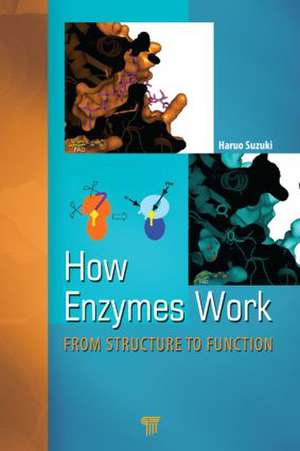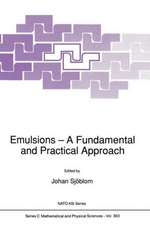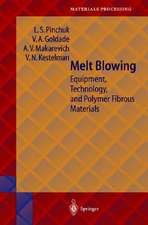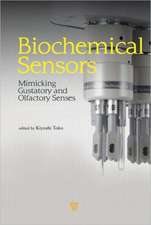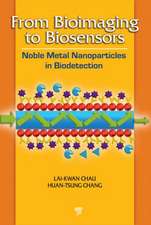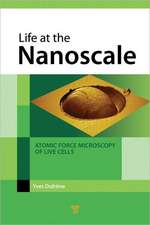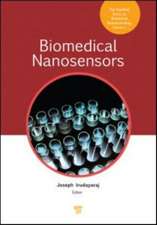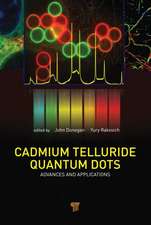How Enzymes Work: From Structure to Function
Autor Haruo Suzukien Limba Engleză Hardback – 5 feb 2015
| Toate formatele și edițiile | Preț | Express |
|---|---|---|
| Hardback (2) | 826.88 lei 6-8 săpt. | |
| Jenny Stanford Publishing – 10 sep 2019 | 826.88 lei 6-8 săpt. | |
| Jenny Stanford Publishing – 5 feb 2015 | 876.32 lei 6-8 săpt. |
Preț: 876.32 lei
Preț vechi: 1068.68 lei
-18% Nou
Puncte Express: 1314
Preț estimativ în valută:
167.71€ • 174.72$ • 139.44£
167.71€ • 174.72$ • 139.44£
Carte tipărită la comandă
Livrare economică 11-25 februarie 25
Preluare comenzi: 021 569.72.76
Specificații
ISBN-13: 9789814463928
ISBN-10: 9814463922
Pagini: 234
Ilustrații: 105 black & white illustrations, 18 colour illustrations
Dimensiuni: 152 x 229 x 20 mm
Greutate: 0.45 kg
Ediția:1
Editura: Jenny Stanford Publishing
Colecția Jenny Stanford Publishing
ISBN-10: 9814463922
Pagini: 234
Ilustrații: 105 black & white illustrations, 18 colour illustrations
Dimensiuni: 152 x 229 x 20 mm
Greutate: 0.45 kg
Ediția:1
Editura: Jenny Stanford Publishing
Colecția Jenny Stanford Publishing
Public țintă
Academic, Postgraduate, and Professional Practice & DevelopmentCuprins
Preface. Chapter One. Introduction. General properties of enzyme. Examples of enzyme. References. Chapter Two. Overall reaction kinetics. Road to the steady state kinetics. Demonstration of the enzyme-substrate complex. Meaning of steady state. Kinetic parameters. Problems. References. Chapter Three. Factors affecting on the enzyme activity. Enzyme. Substrate concentration. Inhibitor. Problems. References. Chapter Four. Effect of pH, temperature, and high pressure on the enzymatic activity. Effect of pH. Thermodynamics in the enzymatic reaction. Temperature dependence of the enzymatic reaction. Effect of pressure. Effect of temperature and pressure on α-chymotrypsin-catalyzed reaction. Problems. References. Chapter Five. Measurements of individual rate constants. Rapid mixing techniques. Analysis of the first-order reaction. Problems. References. Chapter Six. Structure of proteins. Amino Acids. Polypeptide and protein. Analysis of primary structure. Three dimensional structure. Tertiary and quaternary structures. Structural motif and loop. Problems. References. Chapter Seven. Active site structure. Active site and active center. Cofactor, coenzyme, prosthetic group. Search of active site. Examples of active site studies. Problems. References. Control of enzyme activity. Regulation by non-covalent interaction. Regulation by covalent Modification. Problems. References. Chapter Nine. Preparation of enzyme. Extraction of enzyme. Purification of enzyme. Purity analysis of enzyme. Problems. References. Chapter Ten. A case study: L-Phenylalanine ocidase (deaminating and decarboxylating). Introduction. Preparation of PAO. Catalytic properties of PAO. Molecular Properties of PAO. Physiological role of PAO. Problems. References. Appendix. Derivation of the rate equation by King-Altman’s method. Physical constants. Conversion of units. Greek numbers and alphabet. Useful softwares and data banks. Genetic code. Solutions for problems. Index.
Notă biografică
Haruo Suzuki is professor emeritus at Kitasato University, Tokyo, Japan, a councilor of the Japanese Biochemical Society, and a member of the Japan Society for Bioscience Biotechnology and Agrochemistry. A biochemist, he graduated from the Department of Chemistry, Tokyo Metropolitan University, in 1966 and received his DSc from the Division of Biophysics and Biochemistry, the Graduate School of Science, University of Tokyo, in 1971. He worked as a postdoctoral fellow in the Department of Pathology, University of California at San Diego, from 1971 to 1973. He worked at the Institute for Developmental Research, Aichi Prefectural Colony, Japan, from 1973 to 1978, Kitasato University School of Medicine, Japan, from 1978 to 1994, and Kitasato University School of Science from 1994 to 2007. Prof. Suzuki’s research interests focus on the computer analysis (QM/MD) of enzyme catalysis.
Recenzii
"The enzyme is a classic but very important material that everybody in the field of biology, medicinal chemistry, biotechnology, and medicine must be familiar with. It is the extreme feature of protein that works in the cells. This concise book covers classic and modern enzymology and, therefore, is an excellent guide for those who possess the basic knowledge of chemistry and want to proceed to advanced courses."
—Prof. Takeshi Nishino, University of Tokyo, Japan
"This carefully written book provides very useful information on enzymes and will immensely benefit not only undergraduate and graduate students but also researchers interested in enzymes."
—Dr. Hitoshi Nakamoto, Saitama University, Japan
—Prof. Takeshi Nishino, University of Tokyo, Japan
"This carefully written book provides very useful information on enzymes and will immensely benefit not only undergraduate and graduate students but also researchers interested in enzymes."
—Dr. Hitoshi Nakamoto, Saitama University, Japan
Descriere
This book starts with an introduction to various enzymes to show how interesting enzymes are. It is followed by historical kinetic studies on enzymes and the overall rapid-reaction kinetics. The subsequent topics describe the basics of protein structure, the control of enzyme activity, and the purification of enzymes. A case on the kinetic and structural studies of L-phenylalanine oxidase is also presented. There are many good books on enzyme kinetics, but only a few books describe their kinetic and structural aspects. This book deals with both and contains many references that can be good sources for further readings. The book is handy and is especially helpful for beginners.
